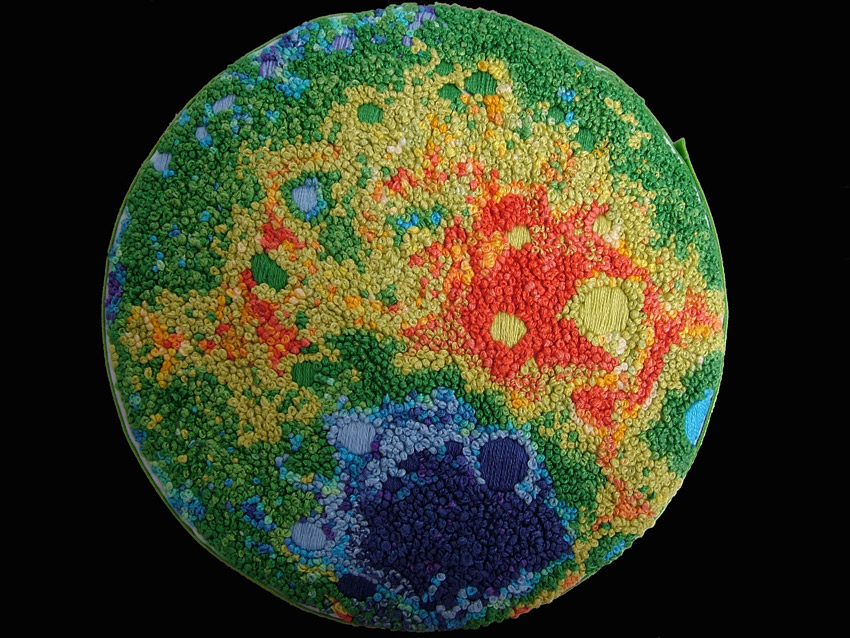
image and art by Melody Lord, Australia
Is this the first image of the lunar farside from a terrestrial observer? While googling for information about Korolev for the Jan 14 LPOD I stumbled upon an embroidery of the Moon. And not the nearside, which has inspired much artwork, but the averted farside. Melody writes that she is, interested in astronomy and cosmology in a very amateur sense; I do very little observing (although I was out last night trying to spot Comet McNaught amongst the clouds!) but I am always fascinated by other people’s observations and love to read about the latest discoveries. My moon embroidery was inspired by two things: one was an embroidery design by an English woman who stitched multicoloured French knots and covered pebbles to be used as paperweights. With this in the back of my mind, I was reading a JPL document about the moon and the colours of the topographical map they included, together with the cratered texture of the surface, sprang to mind as an inspiration for an embroidery. I am very pleased with the result, it was fun to do and educational as well, and took about a month of one or two hours of embroidery a day to complete. The farside is now the top of a box that holds moonstones, of course! (Scroll down to Dec 24 and 22). Oh yes, do you see Korolev? It’s the smaller yellow-floored patch above the topographic blues of the South Pole-Aitken basin.
Technical Details:
I decided to stitch in some of the major craters in padded satin stitch before beginning the French knots. I used three strands of embroidery cotton for the satin stitch and some of the knots. Other knots are worked in two strands. Mostly I am doing three wraps, but occasionally four or five to vary the sizes of the knots. From Nov 24 Two Cents.
Related Links:
Melody’s website
Yesterday's LPOD: Stereo Jansen
Tomorrow's LPOD: A Mystery Solved
COMMENTS?
Register, Log in, and join in the comments.



